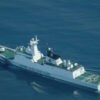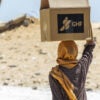At 8:44 p.m. PST Feb. 11, 2010 … for just a second … man made night into day. A short-range ballistic missile launched from a sea-based platform off California’s Point Mugu Naval Air Warfare Center. Moments later, the Airborne Laser carried aloft in a specially modified 747 detected it.
Then it cranked up the high-energy laser. That beam struck home, burning a small hole in the missile. A split-second later, its structural integrity destroyed, the missile vaporized in a tumbling corkscrew.
Within two minutes of launch time, it was all over.
Not bad for a defensive weapon once ridiculed as science fiction. Skeptics even persuaded the Obama administration to slot the airborne laser for the ninth circle of procurement hell — a pit for dead-end research and development programs. But this month’s dramatic success has put the critics on their heels.
The Point Mugu exercise was what engineers call a “proof of principle” test. They tested it. It is proven.
But don’t expect high-fiving in the White House. The administration already passed on the option to build a second test aircraft. Rather than add the ABL to the military’s arsenal, the administration seems more than willing to let the project end as a successful science experiment.
It will argue laser missile defense makes no sense because the weapon’s range is limited to a few hundred kilometers. That would put the lumbering aircraft well within the range of air defense systems fielded by the likes of North Korea and Iran.
On the other hand, here is what the administration won’t admit. There are other threats already out there that the Airborne Laser is well-suited to counter. One such danger is the “Scud in bucket” scenario.
Scud missiles are shorter-range weapons, originally manufactured and proliferated worldwide by the Soviets. Today, several other countries make their own versions. These missiles are so readily available — and cheap — that several years ago a U.S. arms collector bought one and tried to ship it home.
Iran’s Shahab-3, an advanced Scud variant, seems capable of traveling 1,000 kilometers and carrying as much as a 10-kiloton warhead. It couldn’t reach Washington from Tehran, but then, it wouldn’t have to. Iran could easily extend the missile’s reach simply by moving it to a commercial freighter and firing it from nearby using an improvised vertical launch tube disguised as cargo.
In many ways, Scud in a bucket is the ultimate weapon. It could sail close to U.S. waters without being subject to inspection by the Coast Guard or Customs. The enemy could fire the missile and scuttle the ship, leaving no record of who launched the attack.
If Iran has one missile and nuclear weapon, it might have two. It could detonate one over New York in a low-altitude air burst that would kill up to a half-million and cripple Manhattan forever.
Iran could fire a second at high altitude over the mid-Atlantic states, creating an electro-magnetic pulse that would take down a large portion of the national grid and plunge Washington, D.C., into permanent darkness.
America would be crippled in a flash, with no obvious enemy at which to shoot back.
An ABL could help neutralize this threat, and others. Advancing the technology alone will give the U.S. a dramatic advantage over potential adversaries.
But if the administration has its way, we’ll see the ABL in the Smithsonian, rather than defending our coasts.






























10 Replies to “Dumping Airborne Laser Leaves America Vulnerable”